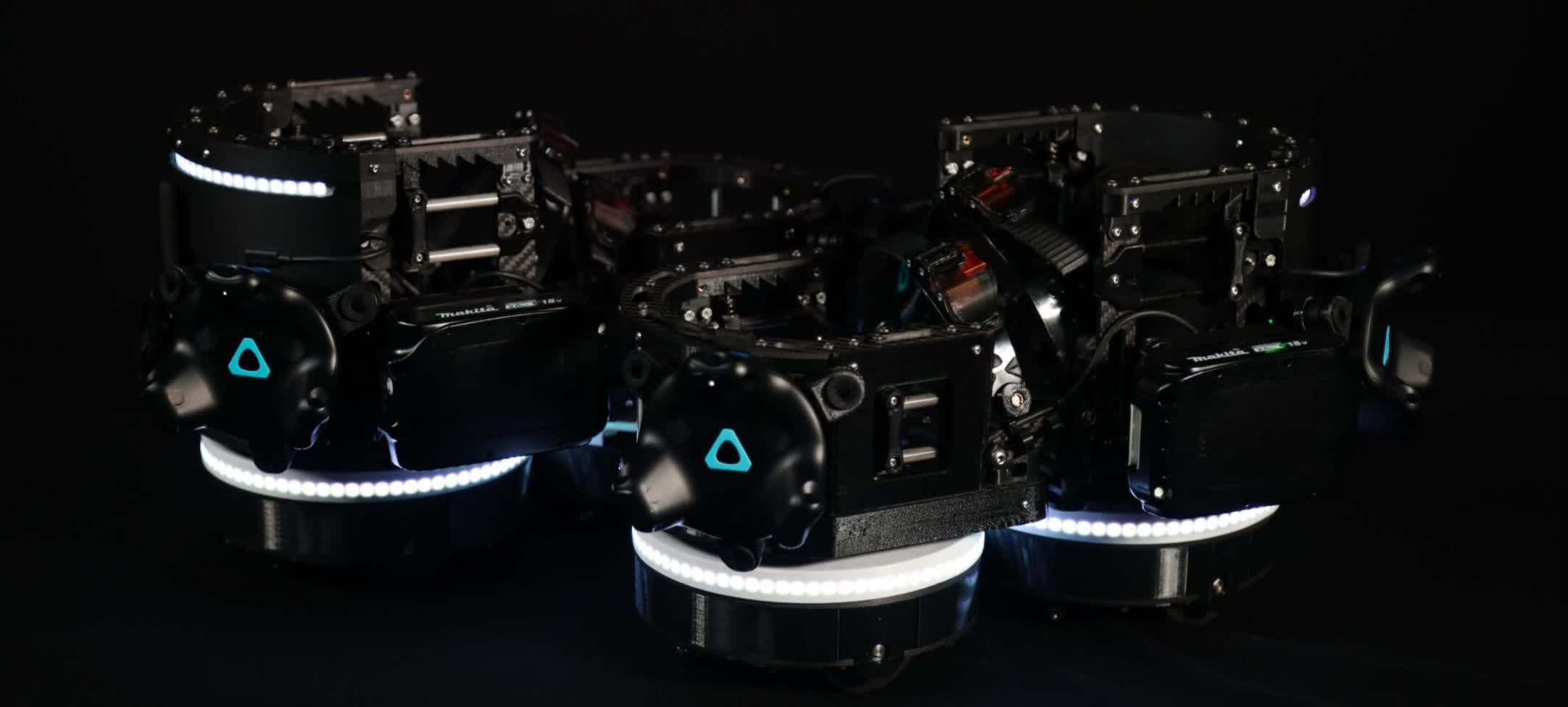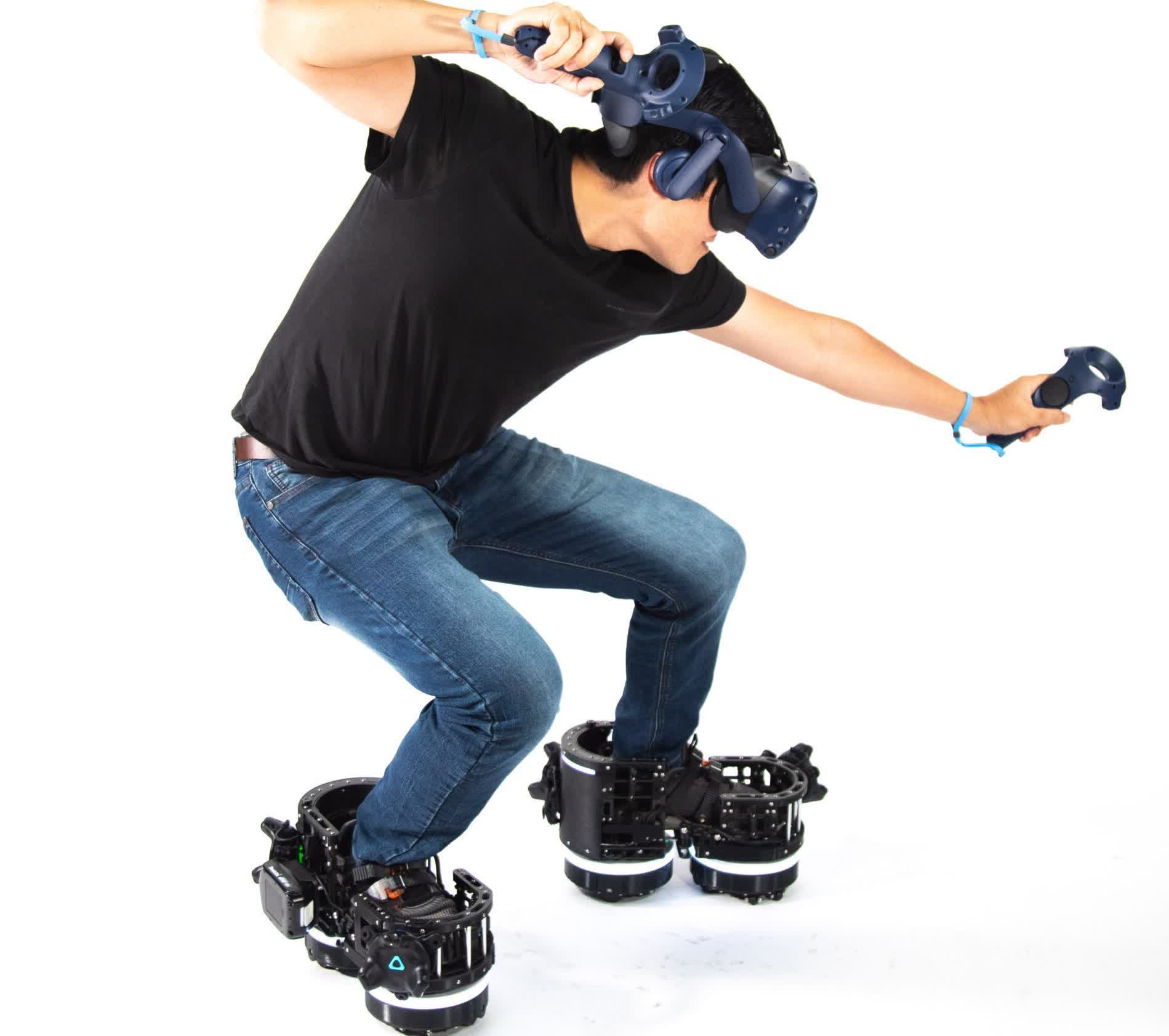Forward-looking: Virtual reality has come a long way in the last few years, and while adoption rates aren't what developers hoped, devices are improving and getting cheaper. But VR still has its problems, including moving around in games. One company has come up with an interesting solution to this conundrum: VR boots.
First-person virtual reality games are great fun; moving around in them, however, often isn't. The sensation of traveling forward while our bodies remain stationary can cause motion sickness, and for those games where you do move around IRL, there's the danger of crashing into something. There's also the risk of going beyond the VR boundaries. Most games, including Half-Life: Alyx, use a teleport system where players instantly jump from one spot to another.
There are some ways to get around the problem, but they're far from convenient: few people have space or money for a giant, multi-directional treadmill. There's also the 'walking on the spot' method, which isn't great. Ekto VR's first product, the Ekto One, takes a different approach.
As reported by UploadVR, the Ekto One is a pair of lightweight, robotic boots that feature two rotating plates on the bottom of each device. When you walk forward, the boots glide backward, keeping you in the same spot---just like walking (moonwalking?) while wearing roller skates. They also have a set of brakes that are applied when standing still to stop you from falling.

The video above shows the Ekto One being used in Half-Life: Alyx. The concept does look pretty cool, but there are a few obvious drawbacks. The user has to move very slowly---not something you want in FPS games like Doom---and there are moments when he looks pretty unsteady. Let's be honest, walking around in a pair of giant roller skates while holding two controllers and wearing a massive helmet isn't the easiest of tasks; you definitely wouldn't want to try sprinting in these. Not sure they'd work very well on a carpet, either.
Still, the current Ekto One model is made for enterprise solutions, so there could be some improvements to the consumer version that's set to arrive in two to four years.
